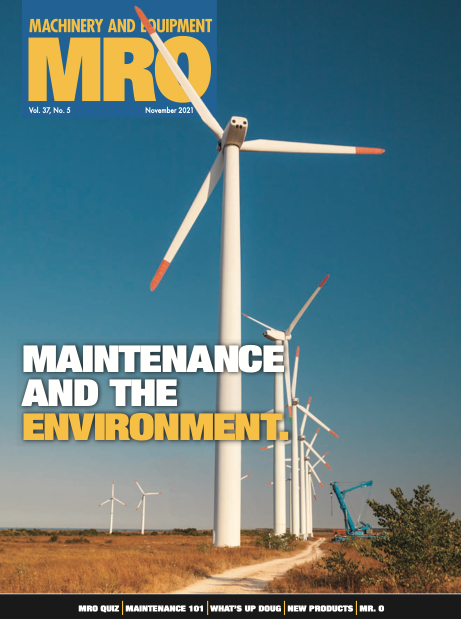
OPINION: Sustainability: The Core of Your Maintenance Practices
Editor's Notebook from November 2021 issue of MRO.
November 30, 2021 | By Maryam Farag

Earth Overshoot Day 2021 happened on July 29, a month earlier than the year before. It was pushed forward because emissions are on the rise and biodiversity loss is speeding up. (Each year, Earth Overshoot Day represents the date humanity has used up all the biological resources the planet regenerates each year.)
This is when terms like “environmentally friendly” and “sustainability” come in. “Sustainability is meeting the needs of today without compromising the ability of future generations to meet their own.”
And the simplest way to define being environmentally-friendly is “the act of living with intent.” The intent is focused on not only not creating harm to the environment, but also preventing as much harm from happening to the environment through your interactions with it. Being environmentally-friendly goes far beyond just turning off lights when you leave the room or separating your garbage for recycling; it is about changing the purpose of how you live.
In this issue of MRO, our main theme is the impact that maintenance can have on the environment. Going green. Carbon neutral. Eco-friendly. Carbon footprint. We hear these buzzwords about the environment all the time, and organizations always want to reduce waste and save money. But what does maintenance sustainability really mean for the maintenance team?
Within traditional maintenance management, the implementation and optimization of specific maintenance policies and strategies is mainly based on cost and availability criteria. However, maintenance actions often have an impact on energy, consumption of resources and related environmental impacts.
The last decade, a green image became more important, which resulted in an increasing awareness of the importance of ecological impacts. Therefore, it becomes centrally relevant to take ecological aspects into account in maintenance management. According to maintenance experts, the maintenance department is often the focus of environmental policies because maintenance itself is a key part of sustainability, as it improves operations and contributes to longer asset life.
After all, the best way to reduce waste is by preventing assets from becoming inefficient and from breaking too soon in the first place, which means that organizational sustainability policies have a big impact on how the maintenance team does its job.
Here is a sneak peak of what you’re going to learn about in this issue:
Measuring environmental impact is about calculating what is saved instead of what was spent; fuel that wasn’t burned, water that wasn’t used, and waste that
never happened.
Computerized maintenance management system (CMMS) solutions can help you track what you’ve already done, and what still needs to be done. Also, CMMS can help you quantify how those tasks turn into savings; in time, money, and other resources.
Good practice in maintenance has a direct effect by increasing the life cycle of facilities and equipment, contributing to more sustainable use of raw materials needed for their construction.
Similarly, good practice affects the quantity of spare parts used, or obsolete parts thrown away, energy consumption of the organizations, the quantity of highly polluting waste generated in the form of used lubricants and products caused by machine failures.
In conclusion, the environment is the responsibility of all of us, so let’s start taking care of it, even if a certain action might look insignificant to you, it will definitely add to the bigger picture, and eventually reduce our ecological footprint.
